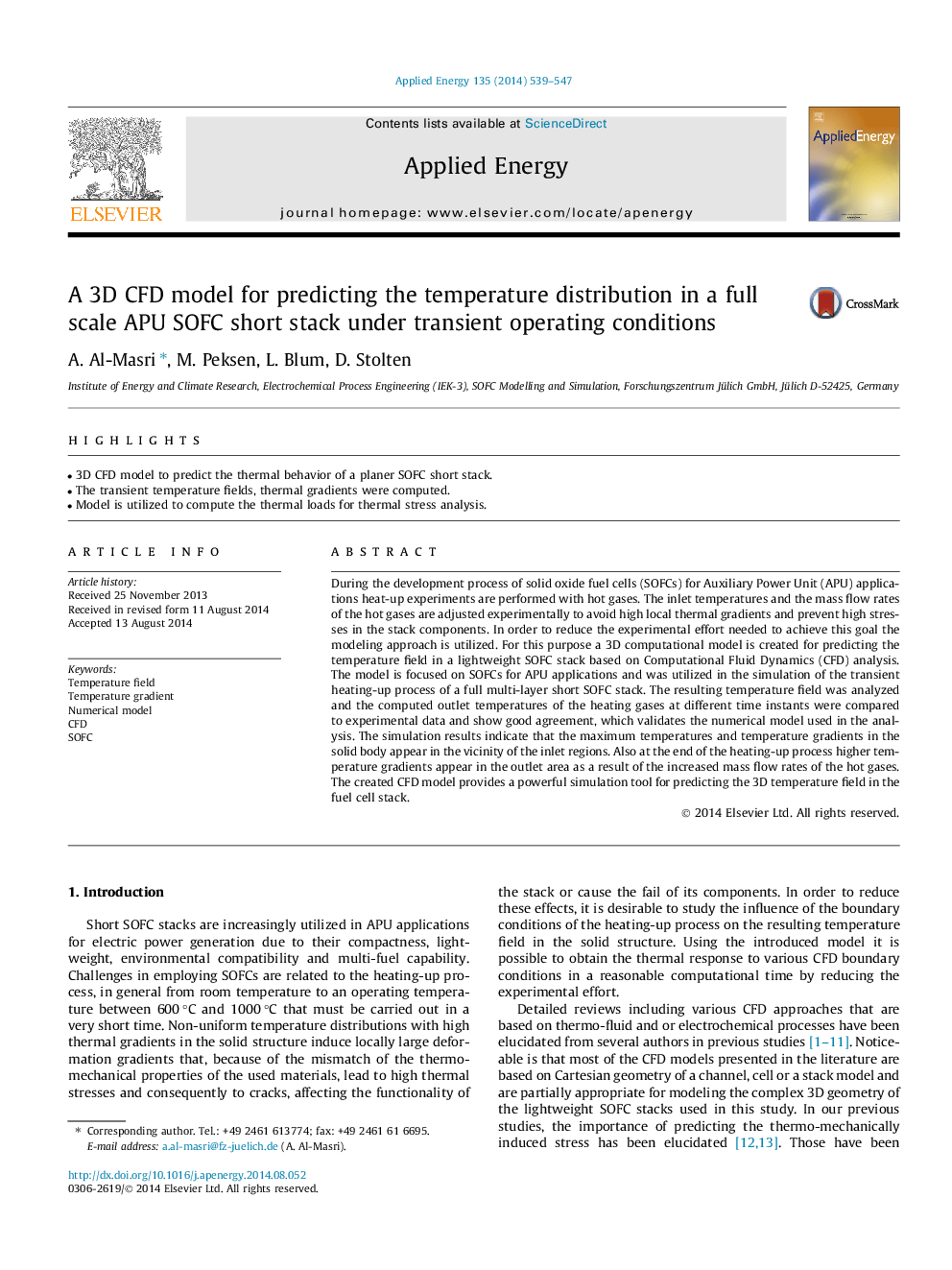| Article ID | Journal | Published Year | Pages | File Type |
|---|---|---|---|---|
| 6689266 | Applied Energy | 2014 | 9 Pages |
Abstract
During the development process of solid oxide fuel cells (SOFCs) for Auxiliary Power Unit (APU) applications heat-up experiments are performed with hot gases. The inlet temperatures and the mass flow rates of the hot gases are adjusted experimentally to avoid high local thermal gradients and prevent high stresses in the stack components. In order to reduce the experimental effort needed to achieve this goal the modeling approach is utilized. For this purpose a 3D computational model is created for predicting the temperature field in a lightweight SOFC stack based on Computational Fluid Dynamics (CFD) analysis. The model is focused on SOFCs for APU applications and was utilized in the simulation of the transient heating-up process of a full multi-layer short SOFC stack. The resulting temperature field was analyzed and the computed outlet temperatures of the heating gases at different time instants were compared to experimental data and show good agreement, which validates the numerical model used in the analysis. The simulation results indicate that the maximum temperatures and temperature gradients in the solid body appear in the vicinity of the inlet regions. Also at the end of the heating-up process higher temperature gradients appear in the outlet area as a result of the increased mass flow rates of the hot gases. The created CFD model provides a powerful simulation tool for predicting the 3D temperature field in the fuel cell stack.
Related Topics
Physical Sciences and Engineering
Energy
Energy Engineering and Power Technology
Authors
A. Al-Masri, M. Peksen, L. Blum, D. Stolten,
